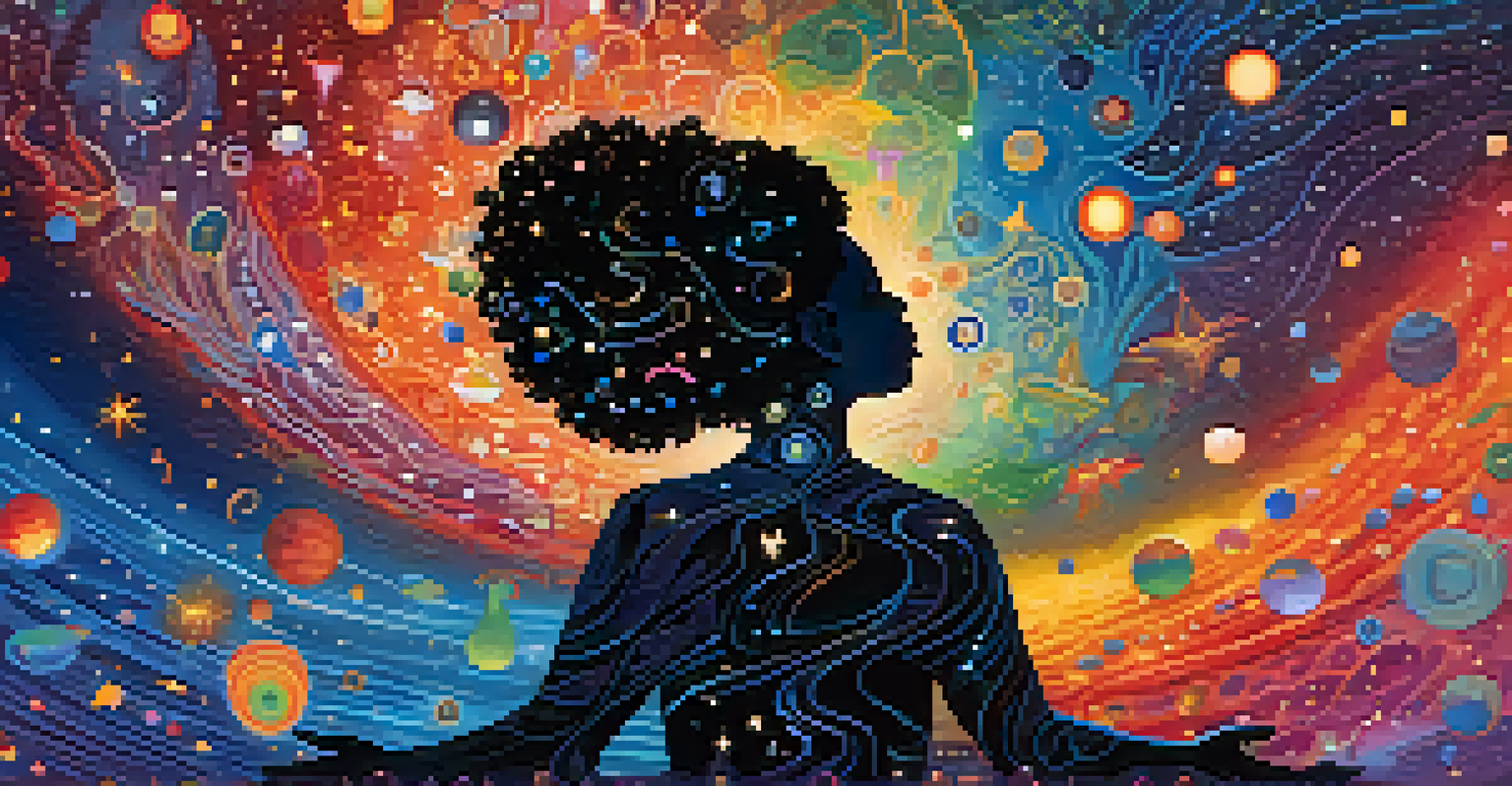The Role of Entheogens in Achieving Profound Joy

Understanding Entheogens: More Than Just Psychedelics
Entheogens are substances that have been used for centuries in various cultures to enhance spiritual experiences. Unlike typical recreational drugs, these substances often promote profound insights and emotional healing. Common examples include psilocybin mushrooms, ayahuasca, and peyote, each offering unique pathways to the inner self.
Psychedelics can help us look at the world from a new perspective, and potentially help us heal from past trauma.
The term 'entheogen' itself means 'generating the divine within,' pointing towards the spiritual aspect of these substances. They encourage users to explore altered states of consciousness, which can lead to transformative experiences. Many people report feelings of interconnectedness and deep joy during these journeys, making them a fascinating area of exploration.
While the scientific community is increasingly studying their therapeutic potential, entheogens are often misunderstood. By shedding light on their cultural significance and personal impact, we can better appreciate how they facilitate joy and connection.
The Science Behind Entheogens and Happiness
Research has shown that entheogens can significantly impact brain chemistry, particularly the release of serotonin and other neurotransmitters associated with happiness. These substances can create a sense of euphoria and emotional release, allowing individuals to confront deep-seated issues. Understanding the neurobiology behind this can demystify the experience.

Studies have indicated that even one session with an entheogen can lead to lasting improvements in mood and overall life satisfaction. Participants often describe a 'reset' of their emotional state, enabling them to approach life with renewed vigor. This scientific backing illustrates that the joy derived from these substances is not just anecdotal.
Entheogens Enhance Spiritual Journeys
These substances promote profound insights and emotional healing, fostering a sense of interconnectedness and joy.
Moreover, the therapeutic applications of entheogens in treating anxiety, depression, and PTSD are gaining attention. By addressing these mental health issues, entheogens can pave the way for a more profound and lasting sense of joy.
Cultural Context: Entheogens Through History
Entheogens have played a vital role in various religious and spiritual traditions throughout history. Indigenous cultures have utilized these substances in sacred rituals, believing they facilitate communication with the divine and enhance communal bonds. Understanding this cultural context can enrich our perspective on their use.
The greatest gift of the entheogen experience is the potential for a greater understanding of oneself and one's place in the universe.
Take, for example, the use of peyote by Native American tribes in their spiritual ceremonies. This practice not only fosters individual enlightenment but also strengthens community ties, illustrating how entheogens can serve as tools for joy and connection. Similarly, ayahuasca ceremonies in South America emphasize healing and transformation.
By learning from these cultural practices, we can appreciate the depth of the experiences entheogens offer. They remind us that joy is often found in community and shared experiences, not just individual pursuits.
Personal Experiences: Stories of Transformation
Many individuals have shared their transformative experiences with entheogens, highlighting how these substances have brought them profound joy. One common theme is the realization of interconnectedness with others and the universe, fostering a sense of belonging and love. These stories create a tapestry of human experience, showcasing the potential for growth.
For instance, someone may recount how a journey with psilocybin led them to confront personal traumas, ultimately resulting in emotional release and peace. Such narratives illustrate that the path to joy often involves navigating through pain and understanding oneself on a deeper level.
Therapeutic Benefits of Entheogens
Research shows that entheogens can significantly improve mental health, offering new hope for treating conditions like PTSD and depression.
These personal stories not only validate the experiences of others but also inspire curiosity and openness towards exploring entheogens. They remind us that joy can be an integral part of a healing journey.
Navigating Risks: Safety and Responsible Use
While entheogens can offer joy and healing, it’s essential to approach them with respect and caution. Misuse or lack of understanding can lead to negative experiences or exacerbate underlying mental health issues. Therefore, education about safe practices is crucial for anyone considering their use.
Setting, intention, and mindset play significant roles in the experiences individuals have with entheogens. Creating a safe, comfortable environment and approaching the experience with a clear intention can greatly enhance positive outcomes. It’s akin to preparing for a journey; the more thought you put into it, the more rewarding it can be.
Additionally, seeking guidance from experienced practitioners or participating in structured ceremonies can provide a supportive framework for exploration. This emphasis on safety ensures that the journey towards joy is as enriching and beneficial as possible.
The Therapeutic Potential of Entheogens
The therapeutic potential of entheogens is an area of intense research and growing interest. Recent studies have shown promising results in using these substances to treat various mental health conditions, offering hope to those who may feel trapped in cycles of despair. This opens the door to new methods for achieving lasting joy.
For example, MDMA-assisted therapy is gaining traction for its efficacy in treating PTSD, allowing individuals to process traumatic experiences in a supportive environment. Similarly, psilocybin has been shown to help alleviate symptoms of depression and anxiety, leading many to find renewed joy in their lives.
Cultural Significance of Entheogens
Entheogens have historically been used in sacred rituals, highlighting their role in enhancing community bonds and spiritual experiences.
As research progresses, the understanding of entheogens as therapeutic tools continues to evolve. This ongoing exploration not only sheds light on their potential benefits but also encourages a broader dialogue about mental health and healing.
A Future with Entheogens: Embracing Joy and Connection
As society becomes more open to discussing mental health and alternative therapies, entheogens may play a pivotal role in shaping our understanding of joy and connection. The ongoing research and increasing acceptance of these substances signal a shift towards more holistic approaches to well-being. This could lead to a future where joy is accessible to more individuals.
Imagine a world where entheogenic therapy is a standard part of mental health care, helping individuals navigate their emotional landscapes with compassion and support. This vision aligns with the growing recognition that joy is not just a destination but a journey that can be facilitated through understanding and community.

Ultimately, embracing entheogens as tools for joy and connection can lead to a more compassionate society. By sharing experiences and knowledge, we pave the way for a future where joy is celebrated in all its forms.